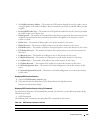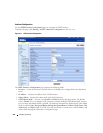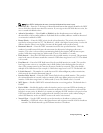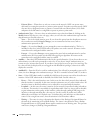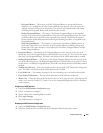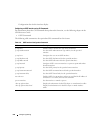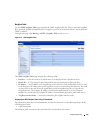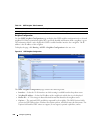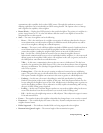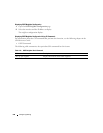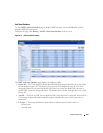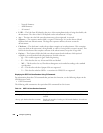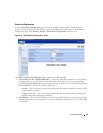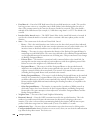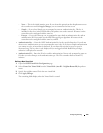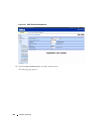
Configuring Routing 537
communicate their capability level to other OSPF routers. Through this mechanism, routers of
differing capabilities can be mixed within an OSPF routing domain. The Options value is a bitmap,
and it signifies the capability of the neighbor.
•
Router Priority
— Displays the OSPF priority for the specified neighbor. The priority of a neighbor is a
priority integer from 0 to 255. A value of 0 indicates that the router is not eligible to become the
designated router on this network.
•
State
— The state of a neighbor can be the following:
–
Down
— This is the initial state of a neighbor conversation. It indicates that there has been no
recent information received from the neighbor. On NBMA networks, Hello packets may still be
sent to Down neighbors, although at a reduced frequency.
–
Attempt
— This state is only valid for neighbors attached to NBMA networks. It indicates that no
recent information has been received from the neighbor, but that an effort should be made to
contact the neighbor (sending the neighbor Hello packets at intervals of Hello Interval).
–
Init
— In this state, a Hello packet has recently been seen from the neighbor. However,
bidirectional communication has not yet been established with the neighbor (i.e., the router itself
did not appear in the neighbor's Hello packet). All neighbors in this state (or greater) are listed in
the Hello packets sent from the associated interface.
–
2-Way
— In this state, communication between the two routers is bidirectional. This has been
assured by the operation of the Hello Protocol. This is the most advanced state short of beginning
adjacency establishment. The (Backup) Designated Router is selected from the set of neighbors in
state 2-Way or greater.
–
Exchange Start
— This is the first step in creating an adjacency between the two neighboring
routers. The goal of this step is to decide which router is the master, and to decide upon the initial
DD sequence number. Neighbor conversations in this state or greater are called adjacencies.
–
Exchange
— In this state, the router is describing its entire link state database by sending
Database Description packets to the neighbor. In this state, Link State Request Packets may also
be sent asking for the neighbor's more recent LSAs. All adjacencies in Exchange state or greater are
used by the flooding procedure. These adjacencies are fully capable of transmitting and receiving
all types of OSPF routing protocol packets.
–
Loading
— In this state, Link State Request packets are sent to the neighbor asking for the more
recent LSAs that have been discovered (but not yet received) in the Exchange state.
–
Full
— In this state, the neighboring routers are fully adjacent. These adjacencies appear in router-
LSAs and network-LSAs.
•
Events
— The number of times this neighbor relationship has changed state, or an error has occurred.
•
Permanence
— This variable displays the status of the entry. Dynamic and permanent see how the
neighbor became known.
•
Hellos Suppressed
— This indicates whether Hellos are being suppressed to the neighbor.
•
Retransmission Queue Length
— The current length of the retransmission queue.



